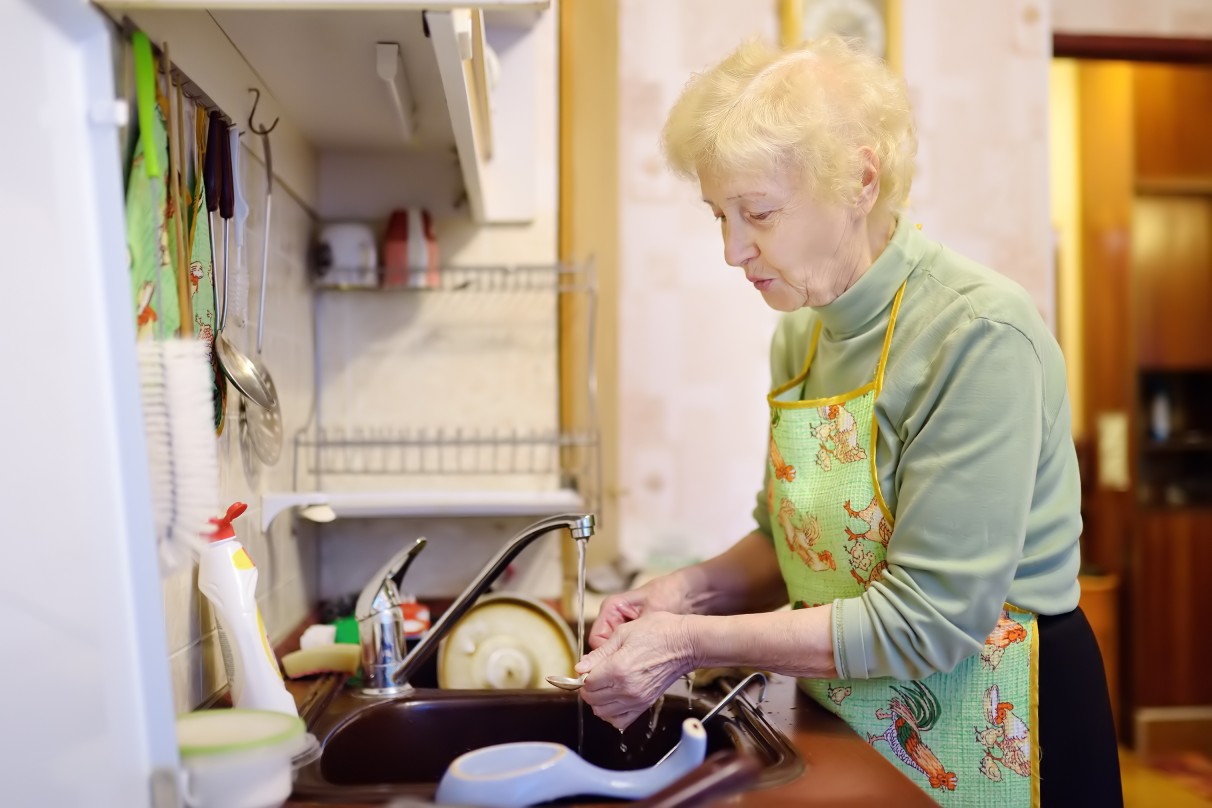
Here’s a whole new motivation for women over 60 to wash the dishes, clean the house, and do the cooking: It can save you from dying from heart disease.
Read More »Researchers also found that those who took part in the study were 43% less likely to develop heart disease in the first place and 30% less likely to suffer a stroke.
The authors of the study explain that chores such as washing dishes, cleaning house, gardening, cooking, and even showering are beneficial because it means that you improve your blood circulation in doing so.
All movement counts
Indeed, all movement counts, the study found. Simply being up and about was linked to a lower risk of major cardiovascular events or even death.
Running or walking briskly, although good, are not the only ways that seniors can improve the health of their hearts and arteries, the university team members explain. Hey, you do not even have to go to the gym. All kinds of daily activities can achieve similar results.
Moving around lowers heart disease risk
Spending more time moving around while engaging in a wide range of activities when we are out of our chairs and on our feet in itself results in a lower risk of heart disease, explains Dr. Steve Nguyen, first author of the study. Understanding why daily life movements are beneficial and adding them to guidelines on physical activity might encourage people to more around more, he adds.
Professor Andrea LaCroix, a senior author of the study, says that much of the movement in which older adults take part is associated with daily tasks that are part of life. They are not always considered physical activity, however.
If people understood that doing the chores is part of a way of undertaking daily physical activity it would encourage more people to move around in their homes, the researchers say.
Not listed in questionnaires
Much of the movement by older adults is associated with daily tasks, but these are not always considered physical activity by the older adults themselves or when they answer questionnaires, the researchers point out.
The team adds that older adults may find it difficult to take part in traditional forms of exercise because they are concerned about their frailty or are unsure what type of exercise they can do. Daily life movements conducted in the home might be more accessible than walking, for example, as aspects of walking, such as negotiating sidewalks and crossing roads, might stop them from taking part in that type of exercise.
The research team suggests that in the future when national guidelines on physical activity are drawn up they should include physical exercise in the home because it is effective, easily available, and comes with relatively low risk.
How the study was conducted
The study included 5,416 healthy women between the ages of 63 and 97. Using artificial intelligence, the researchers classified every minute while the participants were awake. They did so using these classifications: Standing still, sitting in a vehicle, walking or running, and daily life movements, which included standing and walking in a room as well as preparing meals, getting dressed or gardening.
Those who took part in the study wore an accelerometer on their waists for up to seven days in order record common movements.
The women were tracked for about eight years—from May 2012 to February 2020. During that time, 616 were diagnosed with cardiovascular disease, 268 developed heart disease, 253 suffered a stroke, and 331 died.
The report is published in the Journal of the American Heart Association.





